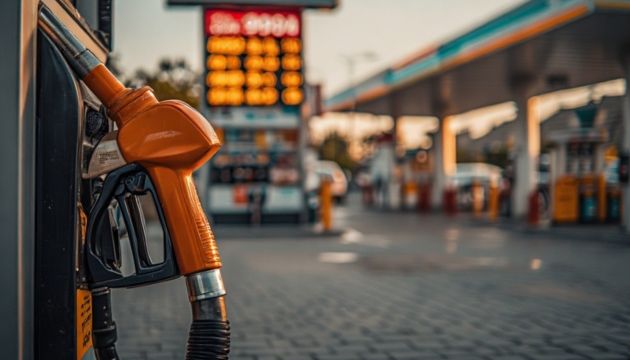ISLAMABAD: The federal government is likely to increase petrol and diesel prices in the upcoming fortnight starting June 16, 2025, mainly due to a rise in international oil prices following recent tensions in the Middle East.
Media reports said petrol is expected to go up by around Rs 4 to Rs 5 per litre, while high-speed diesel (HSD) may see a hike of about Rs 5 per litre. This is based on the final calculations to be announced by the Finance Division on June 15.
The current ex-depot price of petrol is Rs 252.63 per litre, while diesel stands at Rs 254.64 per litre. Petrol is commonly used in private cars, motorbikes, and rickshaws, directly impacting middle and lower-income families.
Diesel, on the other hand, powers heavy transport vehicles, trains, tractors, and agricultural machinery, so its price hike is expected to increase transportation and food costs.
The rise in international prices is largely attributed to the Israel-Iran conflict. Following the conflict, petrol prices in the global market rose by $1.98 per barrel and diesel by $2.54 per barrel. The premium on petrol also increased by $2.16 per barrel, while diesel’s premium remained unchanged.
The estimated cost of petrol has increased by Rs 3.98 per litre and diesel by Rs 4.66 per litre. Customs duty on both fuels is also expected to rise slightly, along with a minor change in the exchange rate from Rs 282.20 to Rs 282.49 per US dollar.
These estimates do not include adjustments by Pakistan State Oil (PSO). If included, the prices may increase further.
Currently, the government collects around Rs 94 per litre from petrol and diesel through petroleum levy (PL), customs duty, and dealer margins. Although GST is zero, PL on petrol is Rs 78.02 and Rs 77.01 on diesel. Customs duty is nearly Rs 16 per litre on both fuels, and distribution margins are around Rs 17 per litre.
— ALSO READ —
No tax on Rs50,000 cash withdrawals — FBR sets new Rs75,000 limit for non-filers
To meet its revenue targets, the government removed the Rs 60 per litre cap on PL through an ordinance in March. This move added Rs 18.02 per litre on petrol and Rs 17 on diesel, helping generate an extra Rs 90 billion per quarter and potentially Rs 300 billion annually, according to OGRA officials.
Despite this, the government is struggling to meet its PL collection target of Rs 1,161 billion for the outgoing fiscal year, against a revised target of Rs 1,281 billion. From July to March, it has collected only Rs 834 billion — about 71 percent of the revised target.
Experts warn that continued fuel price hikes may reduce consumption, leading to a possible shortfall in next year’s Rs 1.4 trillion target for petroleum levy.
Meanwhile, Oil Marketing Companies (OMCs) reported a 10% year-on-year sales growth in May 2025, selling 1.53 million tons of fuel, a 5% increase compared to April.
OGRA will finalize the fuel price calculation based on international oil prices, exchange rates, and other factors, with the new prices to be officially announced on June 15.
Expected Petrol & Diesel Price Hike (Effective from June 16, 2025)
| Fuel Type | Current Price (Rs/litre) | Expected Increase (Rs/litre) |
|---|---|---|
| Petrol | 252.63 | 4.00 – 5.00 |
| High-Speed Diesel (HSD) | 254.64 | 5.00 |
Earlier Announcements for June 1, 2025
Earlier, on June 1, 2025, the Finance Division announced an increase of Re1 per litre in petrol price, raising it from Rs 252.63 to Rs 253.63. However, the price of high-speed diesel (HSD) was kept unchanged.
This followed an earlier decision by OGRA to reduce the price of liquefied petroleum gas (LPG) by Rs 4.62 per kilogram for the month of June.
— ALSO READ —
Islamabad rolls out smart device to catch fake medicines
According to an official notification, the new LPG price for an 11.8 kg domestic cylinder was set at Rs 2,838.31, down from Rs 2,892.91 in May — a reduction of Rs 54.60 per cylinder. The per kg consumer price came down from Rs 245.16 to Rs 240.53.
OGRA explained that the LPG price decrease was due to a 2.67% drop in Saudi Aramco’s contract price and a slight increase of 0.35% in the average dollar exchange rate.
Meanwhile, in an important development, the government introduced a bill in the National Assembly to digitally track petroleum products from import and production to retail sale. The goal is to reduce smuggling and adulteration, which cause huge losses of Rs 300 to 500 billion annually and damage both the environment and vehicle engines.











